School History: Groveton Elementary (1945-1972)
The Baby Boom Begins
In June 1945, there were approximately 8,235 students enrolled in Fairfax County Public Schools (FCPS) at 42 schools. By December 1959, that number would climb to 54,100 students at 84 schools. FCPS administrators had been projecting record enrollment growth for several years, but were unprepared when actual growth far exceeded their expectations.
A few more than 580 pupils are attending classes in three buildings at Groveton, an increase of more than 80 over last week's enrollment.
~ The Sunday Star, September 28, 1947
In 1948, five additional temporary classrooms were added to Groveton Elementary School in the form of Quonset huts. Quonset huts were acquired from World War II military surplus suppliers and were used to combat overcrowding at schools throughout Fairfax County.
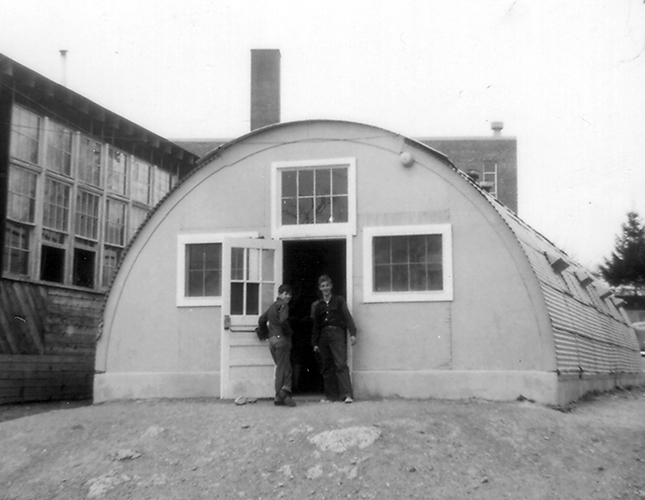
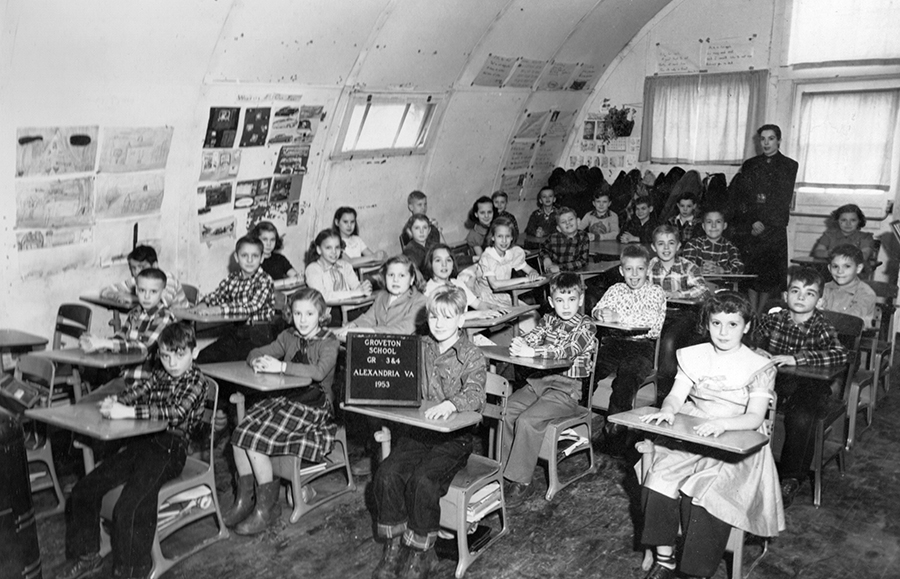
Even with all these temporary facilities outside the main Groveton building in use, the school still remained overcrowded. In the late 1940s, it became necessary to partition the auditorium in half to create two classrooms. A third class was held on the auditorium's stage. Additionally, FCPS rented the recreation room at Groveton Episcopal Chapel for classroom use, and some first and second grade classes attended school on half-day shifts. In December 1949, a literary loan in the amount of $131,000 was approved to build a second addition to Groveton Elementary School, but the State Board of Education was unable to release the money to FCPS immediately because it was short on funding.
All the 663 children at Groveton Elementary School use the toilet facilities in the main school, planned to accommodate 210. The extra buildings are all heated by coal stoves. "The work need not suffer seriously because the environment is primitive," Principal Emmett M. Day declared. "Overcrowding, of course, cannot be conquered, and it is bound to affect us all. Yet our school has the highest record of the five schools that feed into the nearby high school. My staff is wonderful and the parents are thoughtful, considerate and helpful."
~ The Washington Post, May 28, 1950
Teacher Salaries
During the 1950-51 school year, Groveton Elementary School had 20 teachers. The teachers were hired on ten-month contracts, and their salaries ranged between $2,300 and $3,600 for the year depended on their level of education, type of certification, and years of experience. Principal Emmett Milton Day was employed on a 12-month contract at a salary of $5,340 for the year. The average class size at Groveton during the 1951-52 school year was 38 students, the highest in the county at that time.
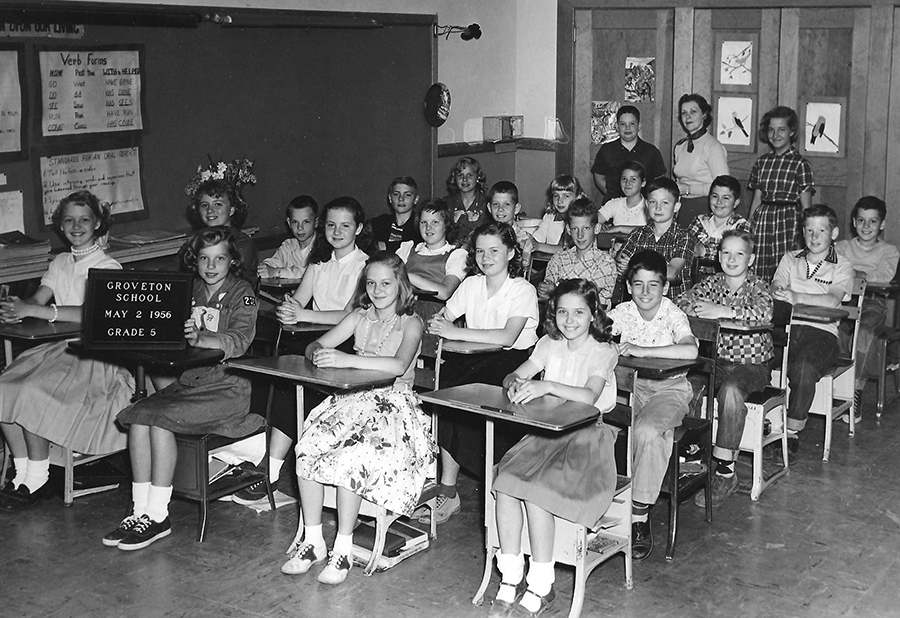
The 1950s
The plans for Groveton Elementary School's second addition were prepared in 1950 by the architecture firm of Dixon and Norman. The addition consisted of five classrooms, a cafeteria, kitchen, library, boiler room, a teachers' lounge, and a book storage room. In May 1951, the School Board awarded the construction contract for the addition to Eugene Simpson and Brother, Inc., at a cost of $177,865. The cafeteria was completed in the fall of 1951, and, in May 1952, the remaining rooms were certified by the School Board as complete. Groveton Elementary School's first librarian was Miss Anna C. Bugg. In the early 1950s, elementary school librarians were assigned to more than one school at a time. Miss Bugg worked part of the week at Groveton and part of the week at Mount Eagle Elementary School.
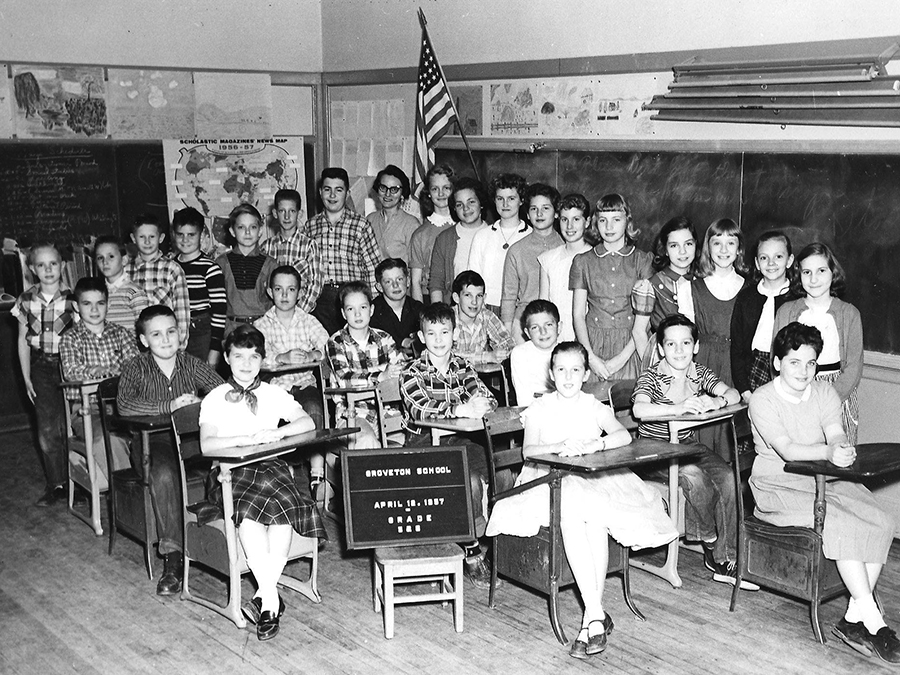
During the 1950s, enrollment at Groveton Elementary School fluctuated as new schools opened nearby, but overcrowding continued to be a major problem throughout the decade. The annexation of Lee-Jackson Elementary School by the City of Alexandria in 1952 was of particular concern to Groveton residents as it exacerbated overcrowding at the few area schools in operation at that time.
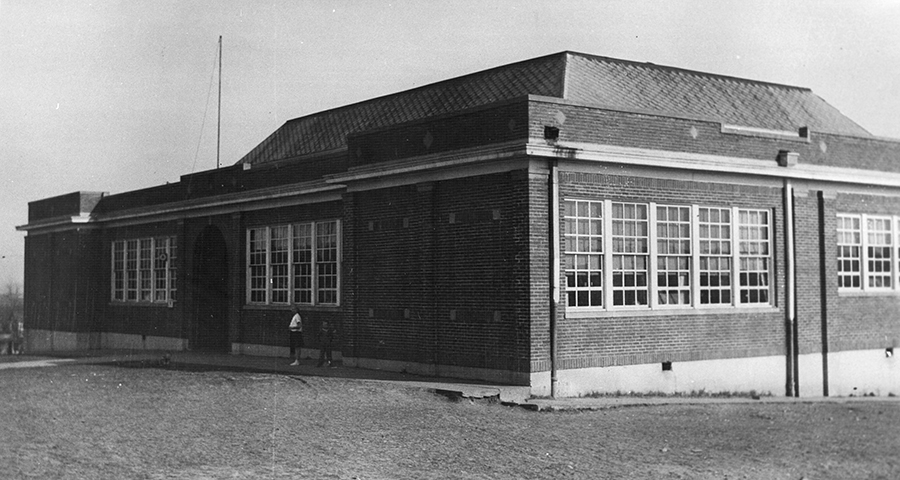
During the late 1940s and early 1950s, FCPS built several elementary schools in the vicinity of Groveton to relieve overcrowding: Mount Eagle and Hollin Hall (1949), Belle View (apartment annex in 1950, building in 1952), Cameron (1953), Bucknell, Hollin Hills, and Virginia Hills (1955).

In November 1954, the Groveton PTA requested that the tarpaper-covered temporary building be torn down upon completion of Bucknell Elementary School, provided that this would mean that only the first graders at Groveton would have to remain on half-day shifts. First graders at Groveton remained on half-day shifts through at least the 1957-58 school year. It is unclear when the tarpaper building and Quonset huts were removed, but the old two-room Groveton School remained in use into the early 1970s.
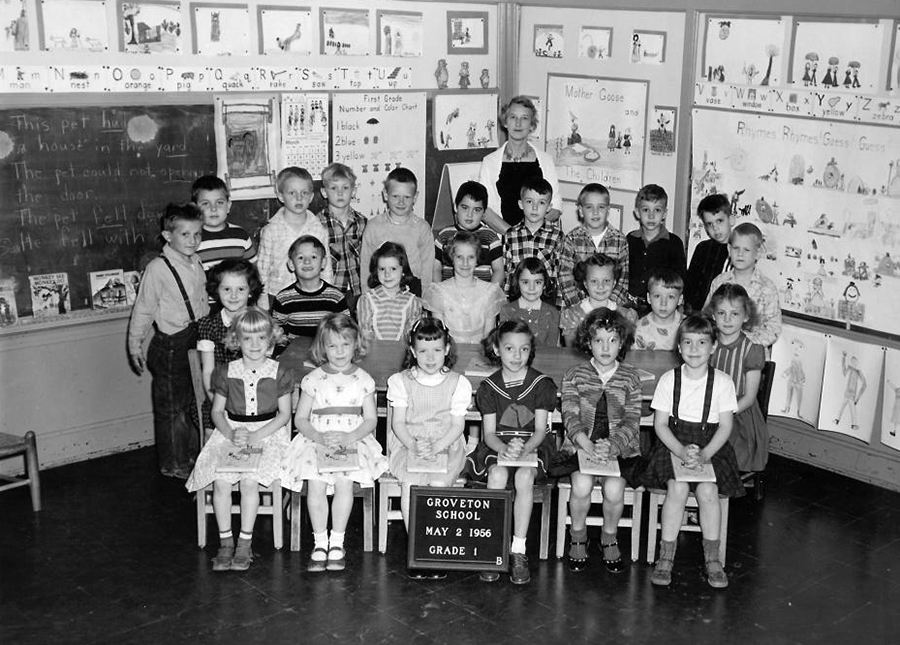

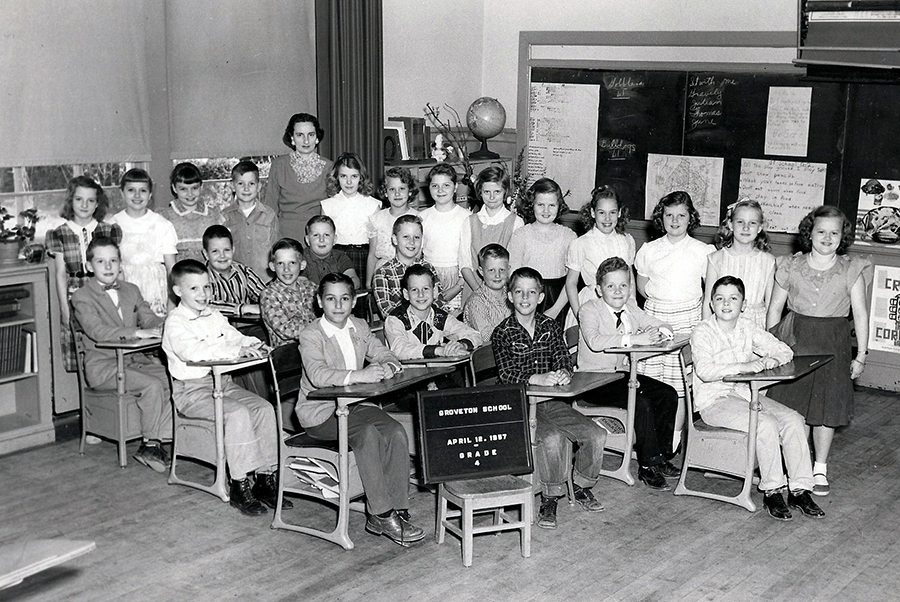
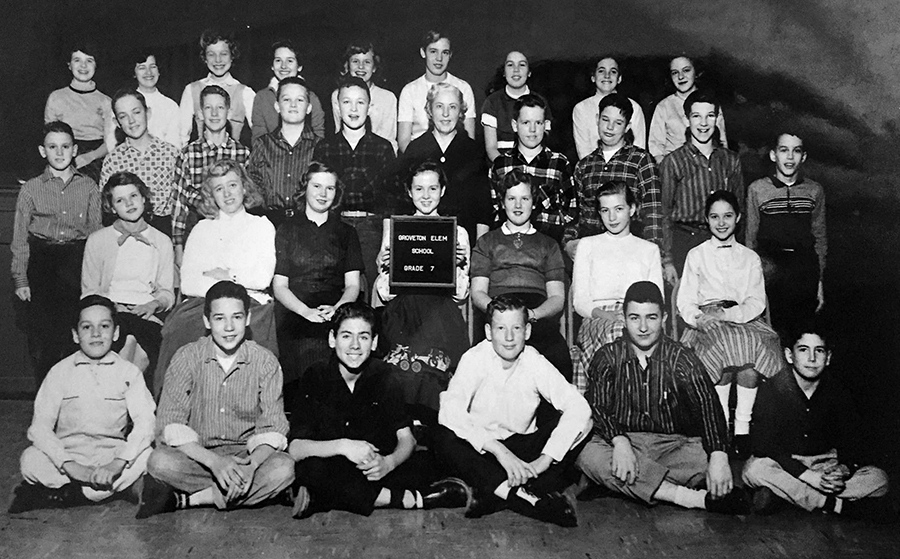
When we were in elementary school, we were given somewhere in the neighborhood of 35 cents to go to Groveton Elementary School on Saturday afternoons. That would get you admission to a movie, a bag of popcorn, and a coke. We would watch movies like Blondie and Dagwood, Abbott and Costello, Tarzan, The Bowery Boys, or an occasional thriller like Dracula. 35 cents was a small price to pay to get the kids out of the house and enjoy the peace and quiet.
~ Kim Arceneaux, Groveton Alumna
The 1960s
The decade of the 1960s brought several major changes to Groveton Elementary School. In September 1960, FCPS opened its first intermediate schools. Prior to this time, elementary schools in Fairfax County educated children in grades one through seven. The seventh grade children in the Groveton attendance area were assigned to Bryant Intermediate School on Quander Road.
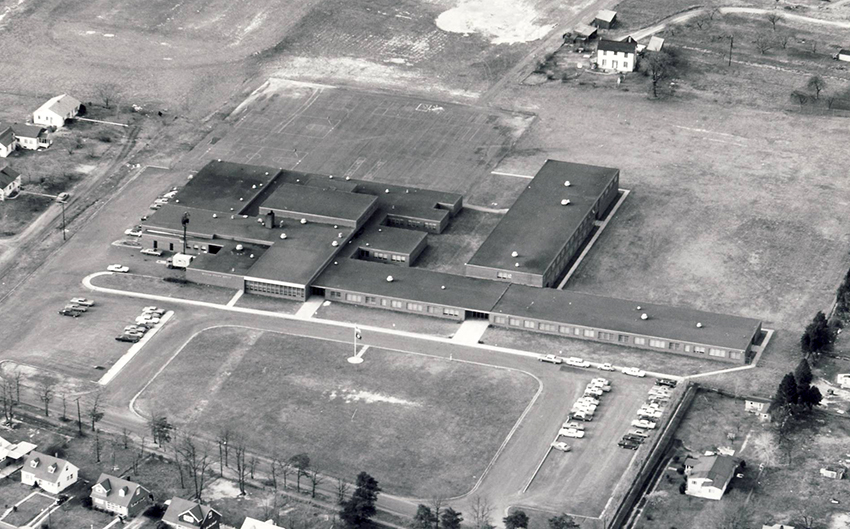
In the early 1960s, FCPS began a slow process of desegregation. Prior to this time, African-American children living near Groveton were assigned to the "colored" schools at Spring Bank or Gum Springs. Spring Bank closed in 1948, and Gum Springs in 1953, after which the children were assigned to Drew-Smith Elementary School located on Fordson Road in the Gum Springs community.

All public schools in Fairfax County racially integrated at the end of the 1965-66 school year, marking the beginnings of the ethnically and culturally diverse Groveton school community we cherish today. Also in the 1960s, FCPS offered its first kindergarten classes. A kindergarten program was piloted in several schools in 1967, and in 1968 Groveton opened its doors to the five-year-olds of the community.

A New Building
By the late 1960s, Groveton Elementary School was beginning to show its age. The size of the school lot prohibited expansion of the building, and FCPS administrators felt the school was completely outdated and was no longer adequate to support the needs of the community. A report to the School Board in January 1971 indicated that 444 children were enrolled at Groveton Elementary School. 360 of these children were housed in the brick building, and the others were housed in a trailer and in the old two-room Groveton School. The report also indicated that the architectural plans for a new 990-pupil capacity Groveton Elementary School were complete.
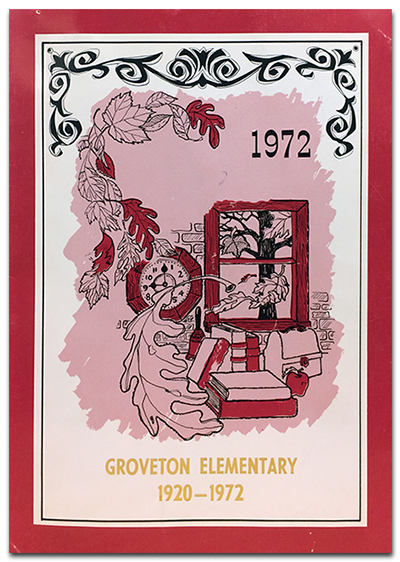
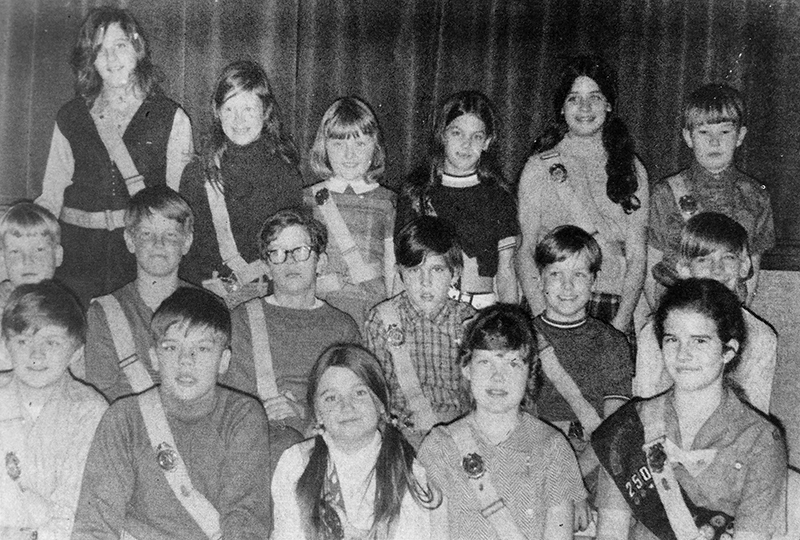
On March 25, 1971, the School Board awarded the construction contract for the new school to Burroughs and Preston, Inc., at a cost of $1.38 million. The new building was completed in time for the opening of schools on September 5, 1972. During the 1971-72 school year, on what would be the last day of school in the "old" Groveton Elementary School, students marched down Groveton Street to the new building and took pictures in front of their new school.
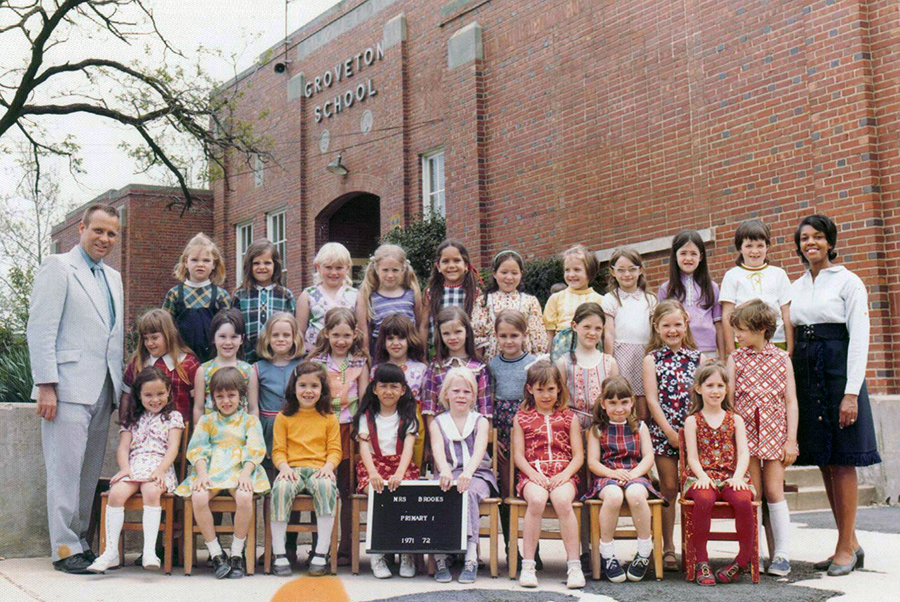
The Principals
During the time when Groveton Elementary School operated out of the building on Memorial Street, the school had eleven principals: James E. Bauserman (1933-36), Melvin Bowman Landes (1936-40), Frances Mitchell (1940-42), Helen M. Haertel (1942-43), Emmett Milton Day (1943-55), Warren Joseph Pace (1955-56), William E. Campbell (1956-57), Harriet G. Trites (1957-1964), Merlin Gil Meadows (1964-66), Alan R. Sterner (1966-March 1968), and William E. Zepka (March 1968-86). We have been able to locate photographs for six of these principals.
Melvin Bowman Landes (1936-40)
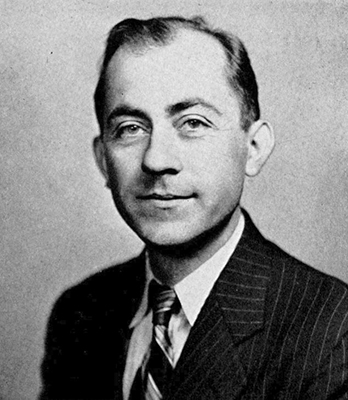
Emmett Milton Day (1943-55)
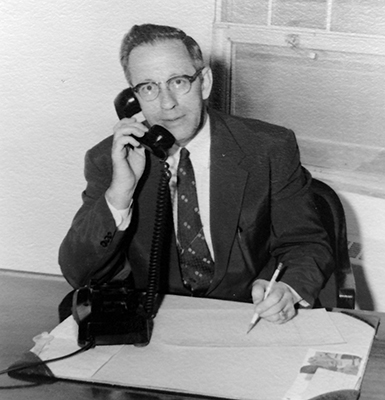
William E. “Bill” Campbell (1956-57)

Harriet G. Trites (1957-64)
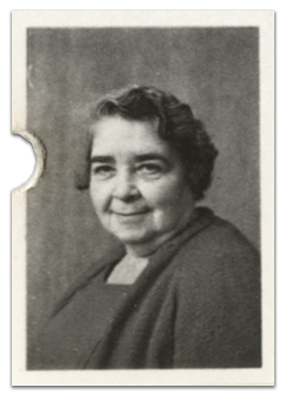
Merlin Gil Meadows (1964-66)

William E. "Bill" Zepka (1967/8-1986)

Area I Office
After Groveton Elementary School moved to Harrison Lane, the 1933 building was converted into the FCPS Area I Administrative Office. The building was also used to house maintenance facilities and mechanics. Conversion of the building to office space was carried out during the spring of 1973, and in May of that year the Area I office staff relocated from Hollin Meadows Elementary School to Groveton. In 1981, the School Board declared the building surplus to school needs and began preparation to move the Area I Office to the old Hollin Hall Elementary School. The 1933 Groveton building was torn down in the early 1990s, and today the site is owned by The Beacon of Groveton apartment complex.

